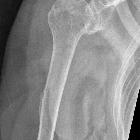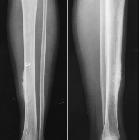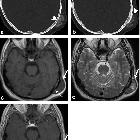juxta-cortical chondrosarcoma





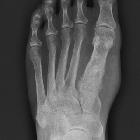
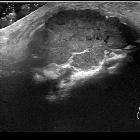
Juxta-cortical chondrosarcomas, also known as periosteal chondrosarcomas, are indistinguishable histologically from conventional medullary chondrosarcomas and are therefore graded into low, intermediate or high-grade tumors (see chondrosarcoma grading).
Epidemiology
Typically it occurs in adults in their 3and 4 decades and is slightly more frequent in males.
Pathology
Unlike conventional chondrosarcomas, they arise from the surface of the bone, lifting the periosteum over themselves as a fibrous pseudocapsule. The underlying cortex is usually thickened or may be eroded, however, extension into the medullary cavity is not usual. Where the periosteum is lifted a Codman triangle may be seen. In addition to the usual chondroid matrix, metaplastic ossification is also common.
Location
They typically arise from long bones, with a predilection for the posterior aspect of the distal femur.
Differential diagnosis
- periosteal osteosarcoma
- affects younger patients (typically 10-25 years of age)
- periosteal reaction perpendicular to the cortex
- diaphyseal rather than metaphyseal
- parosteal osteosarcoma
- stalk of bony attachment
- otherwise similar appearance, location and demographics
- juxtacortical chondroma
- parosteal lipoma
Siehe auch:
- Chondrosarkom
- Humerus
- Tuberositas deltoidea humeri
- periostales Chondrom
- parossales Osteosarkom
- periostales Osteosarkom
- Exostosen des Humerus
- Musculus deltoideus
- parosteal lipoma
und weiter:

 Assoziationen und Differentialdiagnosen zu juxtakortikales Chondrosarkom:
Assoziationen und Differentialdiagnosen zu juxtakortikales Chondrosarkom:

